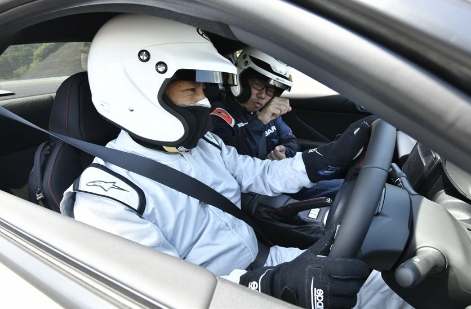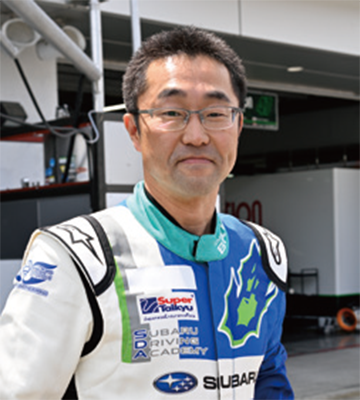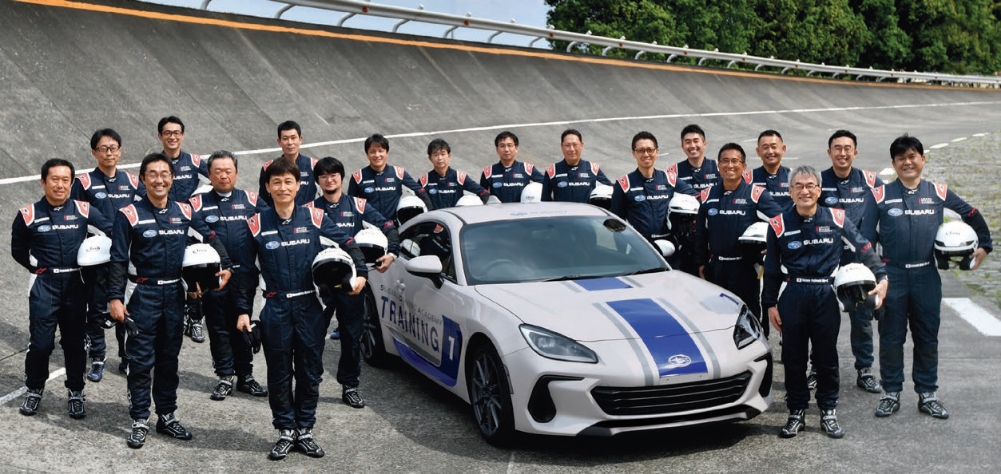SUBARU’s Engineer Development
Handing Down and Enhancing the SUBARU Difference
Working with the Engineers of Tomorrow
Subaru does not employ dedicated test drivers because our engineers assess all of our cars in the development stage. Our engineers want to deliver products that make our customers satisfied, so they drive our cars while assessing sensory qualities that are difficult to express numerically, such as Enjoyment and Peace of Mind. They then reflect their observations in the design drawings after studying their observations theoretically.
Subaru’s strength comes from having the same engineer handle the entire process of driving, feeling, considering, and quantifying instead of dividing it among multiple staff. This is the purpose of the Subaru Driving Academy (SDA). It exists to further refine these skills to allow the creation of even better cars.



Often, clear sensory differences felt by the driver do not show up in figures acquired using conventional measurement methods. At the SDA, we do not limit ourselves to conventional measurement methods. Instead, we focus on probing deeper into the mechanism behind the issue and what we can measure to identify the cause.
Drivers train to sharpen their senses so they can feel differences when driving. They then probe deeper into the mechanisms behind the differences they feel. This increases the number of elements that can be quantified numerically, and these elements are then incorporated into development.
By perpetuating this cycle, we can quantify elements that cause people to feel Enjoyment and Peace of Mind numerically. This expands the development of those elements beyond the realm of hardware and into the realm of control software development. The final result is a car that allows customers to feel the Subaru difference, regardless of the model or type of power unit.
The SDA focuses on training engineers with these qualities in order to continue implementing Subaru’s unique approach to car-making. The SDA is comprised of members from various departments involved in development. Drivers at the SDA hone their assessment and management skills as they acquire the highest level of driving skills possible. They also work to establish car manufacturing that transcends organizational barriers.
Subaru provides value to its customers in the form of Enjoyment and Peace of Mind. We believe we can achieve sustainable growth and further enhance our corporate value by building even stronger relationships with customers who feel an affinity with our pursuit of Subaru’s unique approach to car-making.
On the inception of the SDA, I became a member of its inaugural class. Prior to that, Subaru had already offered training to obtain a license for test course driving, but I felt there was a need for systematic training to improve driving skills and evaluation abilities. So, when I heard that the SDA would be created, I was first in line to join the program.
Today, I serve as an instructor, engaged in human resource development and the planning and operation of training programs. Since each person will sense different parts of how a car handles, the instructor rides with the driver during training to gain a thorough understanding of how the driver perceives the car and to provide explanations tailored to each individual.
If we are able to identify the slightest differences in vehicle handling and performance, like why a certain car’s comfort is better than another’s when going over a bump, despite having equivalent measured values, then we can avoid being trapped by legacy measurement methods and deeply probe the mechanisms giving rise to these differences, identifying the true cause. Graduates organize their own training sessions and workshops in their own departments and have been helping to spread activities learned at the SDA all over the Subaru Group.

Kazuhiro Ito
Vehicle dynamics performance
development
Department
In addition, SDA instructors play a central role in the development of race vehicles used in the Super Taikyu1 series of races that Subaru competes in, with many young employees also involved in this development. The entire process of making a car to enter in a race is carried out at an unimaginable speed when viewed from the usual mass production perspective. At this breakneck speed, vehicle development must have an even greater clarity about the strengths and weaknesses of a vehicle’s performance, including in the areas of driving, turning, and stopping. When I see colleagues tackling issues by bringing together insights from the respective specialized domains and actively exchanging opinions toward issue resolution, rather than taking on an issue alone, it gives me the distinct sense that this is precisely what we need in the future of vehicle development. Building a single car under the harsh conditions of racing and across departmental boundaries has led to the growth of each of our racing team members as engineers, and I believe this has also led to further improvements in the performance and quality of our mass-produced vehicles.
*1:An endurance race where race cars are built to specific regulations and divided into classes for competition. Vehicles include production vehicles modified for racing.

